- Home
- Graham Hancock
Magicians of the Gods: The Forgotten Wisdom of Earth's Lost Civilization Page 9
Magicians of the Gods: The Forgotten Wisdom of Earth's Lost Civilization Read online
Page 9
“So Lake Missoula was more of an innocent bystander, really, than the culprit.”
Figure 19
Randall chuckles. “Yes, that’s right. The lake was the innocent bystander that was in the way and that later got accused of the crime. But the comet was the culprit.”
Conspiracy corner
I’m no conspiracy theorist but I have a sneaking feeling—nothing more—that something a bit like a conspiracy is at work in science to prevent the proper consideration and wide public uptake of catastrophist ideas. I gave the example of J Harlen Bretz in Chapter Three. The frosty and deeply unpleasant reception initially given to his findings, the years that he spent in academic limbo afterward, the repeated, persistent efforts made by a host of scholars to dismiss his evidence entirely, or, failing that, to account for it by gradualist means, and then at last, years later, when all that had failed and the notion of outburst floods from Glacial Lake Missoula had offered itself as a solution, the realization that he had been right all along. But not right, not right under any circumstances, not right in any imaginable universe, on the issue of the single cataclysmic “debacle” that his instincts had originally led him to! If J Harlen Bretz was to be right, then it was necessary that he should be right in a politically correct way—in other words, in a way that could be redacted by skilled uniformitarian spin-meisters to edit out any hint of lurking cosmic disaster!
Indeed, within the fantasy of such a conspiracy (I sincerely hope it is a fantasy!) the jökulhlaups idea is an exceptionally useful one. First of all, it provides what purports to be a wholesomely rational, sober and above all “scientific” account of the tortured geological features witnessed by Bretz in the Scablands. Secondly, jökulhlaups happen every year in various parts of the world today, and thus do not violate the commandment that existing processes, acting as at present, must be held sufficient to account for all geological changes. Thirdly, present relevance can be assigned. The Ice Age floods need not be simply of scholarly interest; since jökulhlaups still occur in the twenty-first century, science can be brought to bear to anticipate and ameliorate their effects.
All of this might start to look like a very effective diversion from the truth, if the truth is that a cataclysm, a single, prodigious cataclysm, did occur at the end of the Ice Age …
And might furthermore recur.
What, in other words, if the Ojibwa prophecy is true?
What if the star with the long, wide tail is, indeed, “going to destroy the world some day when it comes low again?”
Would those who know this benefit from sharing their knowledge with others? Or might they think it served their interests better to keep quiet about the whole thing?
We’ll return to this in Chapter Nineteen. By comparison, the question we have to ask and answer first is much simpler.
Was the Younger Dryas cold event that began so suddenly and so mysteriously 12,800 years ago brought on by the effects of a large comet hitting the earth?
The evidence for the comet
“The Younger Dryas (YD) impact hypothesis,” as its proponents restated it in a keynote paper in The Journal of Geology in September 2014, “proposes that a major cosmic impact event occurred at the Younger Dryas Boundary (YDB) 12,800 years ago.”3 The paper, as we will see, presented a mass of new evidence in support of the hypothesis—in particular confirming and greatly extending earlier evidence of the copious presence of nanodiamonds in samples from the Younger Dryas Boundary layer taken in many different countries. Nanodiamonds are microscopic diamonds that form under rare conditions of great shock, pressure and heat, and are recognized as being among the characteristic fingerprints—“proxies” in scientific language—of powerful impacts by comets or asteroids.4
By 2014 when the Journal of Geology paper was published, debate over whether or not a comet impact was involved in setting off the Younger Dryas had been raging for seven years. The first headline that caught my eye was in New Scientist magazine of May 22, 2007 and asked provocatively:
DID A COMET WIPE OUT PREHISTORIC AMERICANS?
At that time, 2007, I was taking a break from the lost civilization mystery that had absorbed my energies, and been the subject of so many of my books, for so long. The New Scientist article tweaked my curiosity, however, because it referred to the exact epoch that I had focused on in my books. The article didn’t speak of a lost civilization, but began with a reference to the so-called “Clovis” culture of North America which, as we saw in Chapter Three, vanished from the archaeological record during the Younger Dryas between 12,800 and 11,600 years ago. “The Clovis people,” the article observed:
flourishing some 13,000 years ago, had a mastery of stone weaponry that stood them in good stead against the constant threat of large carnivores, such as American lions and giant short-faced bears. It’s unlikely, however, that they thought death would come from the sky.
According to results presented by a team of 25 researchers this week at the American Geophysical Union meeting in Acapulco, Mexico, that’s where the Clovis people’s doom came from. Citing several lines of evidence, the team suggests that a wayward comet hurtled into earth’s atmosphere around 12,900 years ago [N.B. that date would later be revised downward by a hundred years to 12,800 years ago], fractured into pieces and exploded in giant fireballs. Debris seems to have settled as far afield as Europe.5
As I read on, I learned that the team the article was referring to was composed of highly credentialed and eminently respectable mainstream scientists:
Jim Kennett, an oceanographer at the University of California, Santa Barbara, and one of the team’s three principal investigators, claims immense wildfires scorched North America in the aftermath, killing large populations of mammals and bringing an abrupt end to the Clovis culture. “The entire continent was on fire,” he says.
Lead team member Richard Firestone, a nuclear analytical chemist at the Lawrence Berkeley National Laboratory in California, says the evidence lies in a narrow 12,900-year-old carbon-rich layer of sediment found at eight well-dated Clovis-era sites and a peppering of sediment cores across North America, as well as one site in Belgium.6
Probed as to why no crater had yet been identified with this hypothetical impact 12,900 years ago, a third team member, Arizona-based geophysicist Allen West, suggested that smaller, low-density parts of the comet would have exploded in the atmosphere, while larger fragments might have crashed into the two-mile deep ice cap that covered North America at that time. “Such craters,” West observed, “would have been ice-walled and basically melted away at the end of the last ice age,” leaving few traces.7
The article went on to explain that the sediment samples the team’s evidence focused on contained several different types of debris that could only have come from an extraterrestrial source, such as a comet or an asteroid. As well as nanodiamonds, the debris included tiny carbon spherules that form when molten droplets cool rapidly in air, and carbon molecules containing the rare isotope helium-3, far more abundant in the cosmos than on earth.8
“You might find some other explanation for these individually,” says Firestone, “but taken together, it’s pretty clear that there was an impact.” The team says the agent of destruction was probably a comet, since the key sediment layer lacks both the high nickel and iridium levels characteristic of asteroid impacts.9
Last but not least, the New Scientist article confirmed, all the evidence pointed to North America as the epicenter of the disaster:
Levels of the apparent extraterrestrial debris, for example, are highest at the Gainey archaeological site in Michigan, just beyond the southern reach of North America’s primary ice sheet 12,900 years ago. Moreover, levels decrease the further you go from Gainey, suggesting that the comet blew up largely over Canada …10
In other words, largely over the ice cap that covered the northern half of North America during the Ice Age—the source of all the meltwater that scarred and hacked the Scablands of Washington State in “Bretz’s fl
ood” (whether or not that meltwater came exclusively from Lake Missoula or gushed forth in far larger quantities than Lake Missoula, alone, could ever have held). Bretz himself, as we’ve seen, was forced to abandon his own strong intuition that there had been a single, massive meltwater flood in favor of multiple flushings of limited amounts of meltwater out of Lake Missoula again and again over thousands of years.
The primary reason he embraced this theory, however, was not that he had become a convert to gradualism, but because he was never able to explain how a large enough area of the ice cap to supply all the vast amounts of water needed for his flood could simply have melted all at once. He had proposed two possibilities—dramatic overnight global warming on the one hand, or volcanic activity under the ice cap on the other—but, as the reader will recall, he very quickly conceded there was no evidence for either. What Bretz did not consider, and could not consider—because the supporting evidence only began to come in a quarter of a century after his death—was the possibility that the ice cap could have undergone cataclysmic melting as a result of a comet impact.
If only Bretz had known …
A few months after the article appeared in New Scientist, the “Clovis comet” team published a detailed paper on their findings. It appeared in the prestigious Proceedings of the National Academy of Sciences (PNAS) on October 9, 2007. Despite the sober setting, the headline was dramatic:
EVIDENCE FOR AN EXTRATERRESTRIAL IMPACT 12,900 YEARS AGO
THAT CONTRIBUTED TO THE MEGAFAUNAL EXTINCTIONS
AND THE YOUNGER DRYAS COOLING
A carbon-rich layer, summarized the team:
dating to around 12,900 years ago, has been previously identified at Clovis-age sites across North America and appears contemporaneous with the abrupt onset of the Younger Dryas (YD) cooling. The in situ bones of extinct Pleistocene megafauna, along with Clovis tool assemblages, occur below this black layer but not within or above it. Causes for the extinctions, YD cooling, and termination of Clovis culture have long been controversial. In this paper, we provide evidence for an extraterrestrial (ET) impact event close to 12,900 years ago, which we hypothesize caused abrupt environmental changes that contributed to YD cooling, major ecological reorganization, broad-scale extinctions, and rapid human behavioral shifts at the end of the Clovis Period. Clovis-age sites in North America are overlain by a thin, discrete layer with varying peak abundances of (i) magnetic grains with iridium, (ii) magnetic microspherules, (iii) charcoal, (iv) soot, (v) carbon spherules, (vi) glass-like carbon containing nanodiamonds, and (vii) fullerenes with ET helium, all of which are evidence for an ET impact and associated biomass burning circa 12,900 years ago … We propose that one or more large, low-density ET objects exploded over northern North America, partially destabilizing the Laurentide Ice Sheet and triggering YD cooling. The shock wave, thermal pulse, and event-related environmental effects (e.g., extensive biomass burning and food limitations) contributed to megafaunal extinctions …11
Nor were the mammoths, mastodons, ground sloths, horses, camels, giant beaver and other megafauna alone. In total, it is particularly striking that no less than thirty-five genera of mammals (with each genus consisting of several species) became extinct in North America between 12,900 and 11,600 years ago, i.e. precisely during the mysterious Younger Dryas cold event.12 What was now emerging, therefore, was an explanation both for the sudden onset of the Younger Dryas itself and for the accompanying extinctions, and perhaps for much else besides—including the cataclysmic flooding that left its marks on the Channeled Scablands of Washington State.
This seemed all the more plausible when I learned that Firestone, Kennett and West’s proposal for their comet was that it was a conglomeration of impactors including one that might have been as much as 4 kilometers (2.5 miles) in diameter.13 Furthermore, that 4-kilometer object would itself have been just one among multiple fragments resulting from the earlier disintegration—while still in orbit—of a giant comet up to 100 kilometers or more in diameter.14 Many of the fragments of the parent comet (including some of great size as we’ll see in Chapter Nineteen) remained in orbit. Those that hit the earth at the onset of the Younger Dryas underwent further explosive fragmentation (accompanied by powerful airbursts that would themselves have had cataclysmic effects), as they entered the atmosphere over Canada.
Nonetheless, the authors thought it likely that a number of large impactors, up to 2 kilometers in diameter, would have remained intact to collide with the ice cap.15 There, as West had earlier told New Scientist, any craters would have been transient, leaving few permanent traces on the ground after the ice had melted. “Lasting evidence,” the PNAS paper added, “may have been limited to enigmatic depressions or disturbances in the Canadian Shield, e.g. under the Great Lakes, or Hudson Bay.”16
Summarizing the damage, the authors envisaged:
a devastating, high-temperature shock wave with extreme overpressure, followed by underpressure, resulting in intense winds traveling across North America at hundreds of kilometers an hour, accompanied by powerful, impact-generated vortices. In addition, whether single or multiple objects collided with the earth, a hot fireball would have immersed the region near the impacts … At greater distances the re-entry of high-speed, superheated ejecta would have induced extreme wildfires which would have decimated forests and grasslands, destroying the food supplies of herbivores and producing charcoal, soot, toxic fumes and ash.17
And how might all this have caused the dramatic cooling of the Younger Dryas? The authors offered many mechanisms operating together, among the most prominent of these being the huge plume of water vapor from the melted ice cap that would have been cast into the upper atmosphere, combined with immense quantities of dust and debris “composed of the impactor, ice-sheet detritus, and the underlying crust” as well as the smoke and soot from continent-wide wildfires.18 Taken in sum, it’s quite easy to understand how so much lofted debris could, as the authors propose, “have led to cooling by blockage of sunlight”; meanwhile the water vapor, smoke, soot and ice would have promoted the growth of “persistent cloudiness and noctilucent clouds, leading to reduced sunlight and surface cooling … [thus reducing] the solar insolation at high latitudes, increasing snow accumulation and causing further cooling in the feedback loop.”19
Severe and devastating enough in themselves, these factors nonetheless pale into insignificance when compared with the consequences of the hypothesized impacts on the ice cap:
The largest potential effect would have been impact-related partial destabilization and/or melting of the ice sheet. In the short term this would have suddenly released meltwater and rafts of ice into the North Atlantic and Arctic Oceans, lowering ocean salinity with consequent surface cooling. The longer-term cooling effects would have resulted largely from the consequent weakening of thermohaline circulation in the northern Atlantic, sustaining YD cooling for [more than] 1,000 years until the feedback mechanisms restored ocean circulation.20
Impact-related partial destabilization and/or melting of the ice sheet! And on a scale capable of disrupting the circulation of the world’s oceans for more than a thousand years! This matter of thermohaline circulation is an important one that requires explanation. We will return to it. But what most struck me in the paragraph quoted above was that the authors had only considered the consequences of the huge quantities of icebergs and meltwater dumped into the oceans north and east of the epicenter of their proposed comet impacts. They did not consider the effects of that gigantic icy flood on the lands lying immediately south of the ice cap—which most certainly would not have been spared.
Once again I found myself wondering how J Harlen Bretz might have reacted if information about a possible comet impact had been at his disposal during his lifetime. I cannot prove it, of course, but I think he would have been much less likely to be seduced by Lake Missoula gradualism and much more likely—now that a credible heat source had been provided—to stick to his catastrophist guns. A single, catacl
ysmic meltwater flood on a truly gigantic scale coming directly off the ice cap to scour the Scablands begins to look very feasible indeed in the light of the case made by Firestone, West, Kennett and the large team of scientists working with them.
Meanwhile my own hypothesis of an advanced civilization of prehistoric antiquity obliterated from the face of the earth during the Younger Dryas “window” is also strengthened by their work. For if their calculations are correct the explosive power of the Younger Dryas comet would have been of the order of ten million megatons.21 That makes it two million times greater in its effects than the former USSR’s Tsar Bomba, the largest nuclear weapon ever tested,22 and a thousand times greater than the estimated explosive power (10,000 megatons) of all nuclear devices stockpiled in the world today.23 A global disaster of such magnitude at exactly the time I suggested in Fingerprints of the Gods does not prove the existence of a lost civilization of the Ice Age but does at least provide us with a mechanism large enough—if such a civilization did exist—to have obliterated it almost entirely from human memory.
The evidence continues to mount
Because it has such important ramifications for almost everything we think we know about the safety and security of the earth’s cosmic environment, and about our own past, it is reasonable to ask how solid the Younger Dryas comet impact theory really is. Since 2007, when it was first proposed, how has it stood up to scientific scrutiny and what new evidence has been brought forward in support of it?
The answer is that it has stood the test of time well and benefited from a steady accumulation of new evidence set out in the proper way in the scientific literature and subject to rigorous peer review. There is neither space nor need, here, to explore this extensive literature in depth, but to give the general picture I will list the dates and titles of a few of the more important papers, with brief summaries of the conclusions and full references in the footnotes:

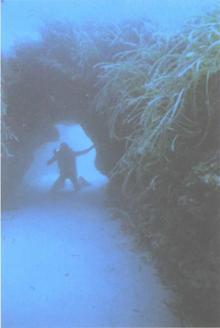 Underworld: The Mysterious Origins of Civilization
Underworld: The Mysterious Origins of Civilization The Master Game: Unmasking the Secret Rulers of the World
The Master Game: Unmasking the Secret Rulers of the World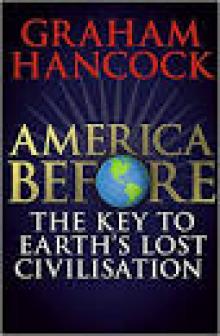 America Before
America Before Entangled
Entangled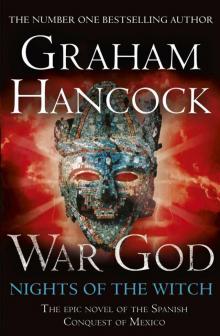 War God: Nights of the Witch
War God: Nights of the Witch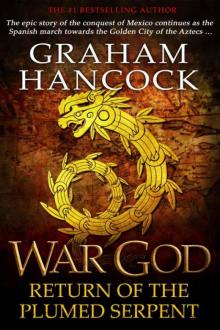 War God: Return of the Plumed Serpent
War God: Return of the Plumed Serpent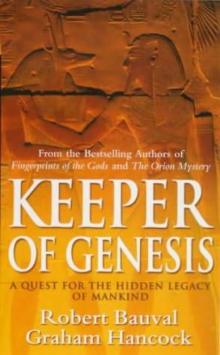 The Message of the Sphinx AKA Keeper of Genesis
The Message of the Sphinx AKA Keeper of Genesis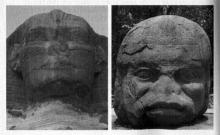 Fingerprints of the Gods
Fingerprints of the Gods The Sign and the Seal
The Sign and the Seal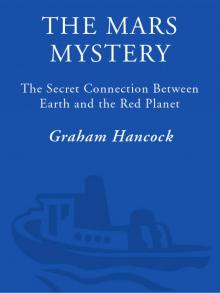 The Mars Mystery: The Secret Connection Between Earth and the Red Planet
The Mars Mystery: The Secret Connection Between Earth and the Red Planet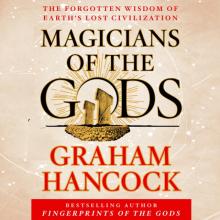 Magicians of the Gods: The Forgotten Wisdom of Earth's Lost Civilization
Magicians of the Gods: The Forgotten Wisdom of Earth's Lost Civilization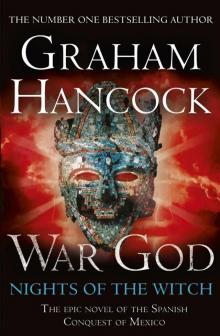 War God
War God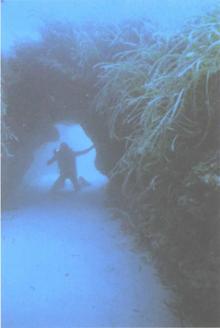 Underworld
Underworld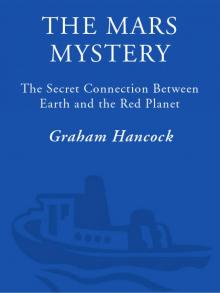 The Mars Mystery
The Mars Mystery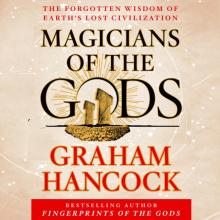 Magicians of the Gods
Magicians of the Gods The Master Game
The Master Game